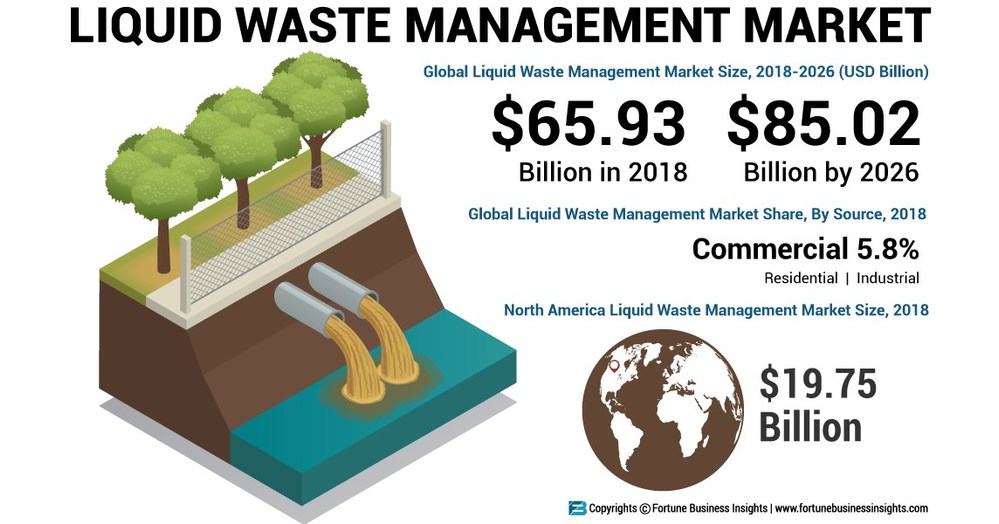The Only Guide to Reclaim Waste
Wiki Article
See This Report about Reclaim Waste
Table of ContentsThe Definitive Guide for Reclaim WasteThe Main Principles Of Reclaim Waste How Reclaim Waste can Save You Time, Stress, and Money.The Single Strategy To Use For Reclaim WasteGetting My Reclaim Waste To Work
Domestic sewer waste refers to the waste and products from a household septic tank. The proper monitoring and disposal of domestic sewage waste call for fluid waste to be moved to a sewage therapy plant where the proper techniques and devices are used to purify and dispose of waste.
Industrial waste usually consists of potential risks, such as flammable products or a mixture of liquid and strong waste products, and calls for a more advanced and comprehensive disposal procedure. The disposal of commercial waste typically entails the purification of waste before transport to make sure risk-free and appropriate disposal. Hazardous waste is developed from results and runoff of commercial processes and production.
This type of waste can not utilize the same sewage management transportation or procedures as septic or industrial fluids. The hazardous waste monitoring process needs the inspection and screening of fluid waste prior to it undertakes the disposal procedure (liquid waste removal). Runoff waste is the liquid waste that comes from runoff and excess stormwater in very populated locations or cities
Runoff waste can trigger contamination and flooding if not taken care of effectively. Guaranteeing correct waste monitoring can prevent calamities and decrease ecological damage.
Some Ideas on Reclaim Waste You Need To Know
Call PROS Providers today to discover about our waste management and disposal solutions and the appropriate means to take care of the liquid waste you generate.(https://www.behance.net/leonaube)This so-called 'wastewater' is not only a crucial resource however, after therapy, will certainly be released to our land, rivers or the sea. Used water from toilets, showers, bathrooms, kitchen sinks, laundries and industrial procedures is known as wastewater.

water used to cool equipment or tidy plant and tools). Stormwater, a type of wastewater, is runoff that flows from farming and city locations such as roof coverings, parks, gardens, roadways, paths and seamless gutters into stormwater drains pipes, after rain. Stormwater streams neglected directly to regional creeks or rivers, at some point reaching the sea.
The Ultimate Guide To Reclaim Waste
In Queensland, most wastewater is treated at sewage treatment plants. Wastewater is transported from domestic or industrial sites with a system of sewers and pump terminals, called sewage reticulation, to a sewage therapy plant. Neighborhood federal governments construct, maintain and operate most sewage blog here treatment plants. Operators are accredited under the Environmental Management Act 1994 to release cured wastewater at an appropriate ecological standard into waterways.The Division of Natural Resources encourages regional governments about handling, operating and maintaining sewage systems and treatment plants. In unsewered locations, city governments might require owners to set up private or home sewage treatment systems to deal with residential wastewater from toilets, cooking areas, restrooms and washings. The Division of Natural Resources authorizes the use of family systems when they are proven to be efficient.
Many stormwater gets no treatment. In some new subdivisions, treatment of some stormwater to remove trash, sand and crushed rock has actually begun using gross toxin catches. Wastewater therapy happens in four phases: Removes strong matter. Bigger solids, such as plastics and other things incorrectly discharged to drains, are eliminated when wastewater is passed with displays.
Wastewater then moves into huge tanks where solids work out and are eliminated as sludge. Grease and scum are skimmed from the surface. Utilizes small living organisms referred to as micro-organisms to damage down and remove continuing to be dissolved wastes and fine particles. Micro-organisms and wastes are incorporated in the sludge. Eliminates nitrogen and phosphorus nutrients that might create algal blossoms in our waterways and intimidate aquatic life.
Excitement About Reclaim Waste
Nutrient elimination is not available at all sewer therapy plants due to the fact that it requires costly specialist equipment. Clear liquid effluent created after treatment may still consist of disease-causing micro-organisms - industrial wastewater treatment.
Many wastewater flows right into the sewerage system. Under the Act, local federal governments administer authorizations and licences for ecologically relevant activities (Ages) involving wastewater launches that could have a neighborhood impact.
Facts About Reclaim Waste Uncovered
Tracking supplies valid details about water quality and can verify that permit problems are being fulfilled. The information acquired with tracking gives the basis for making water high quality decisions.Report this wiki page